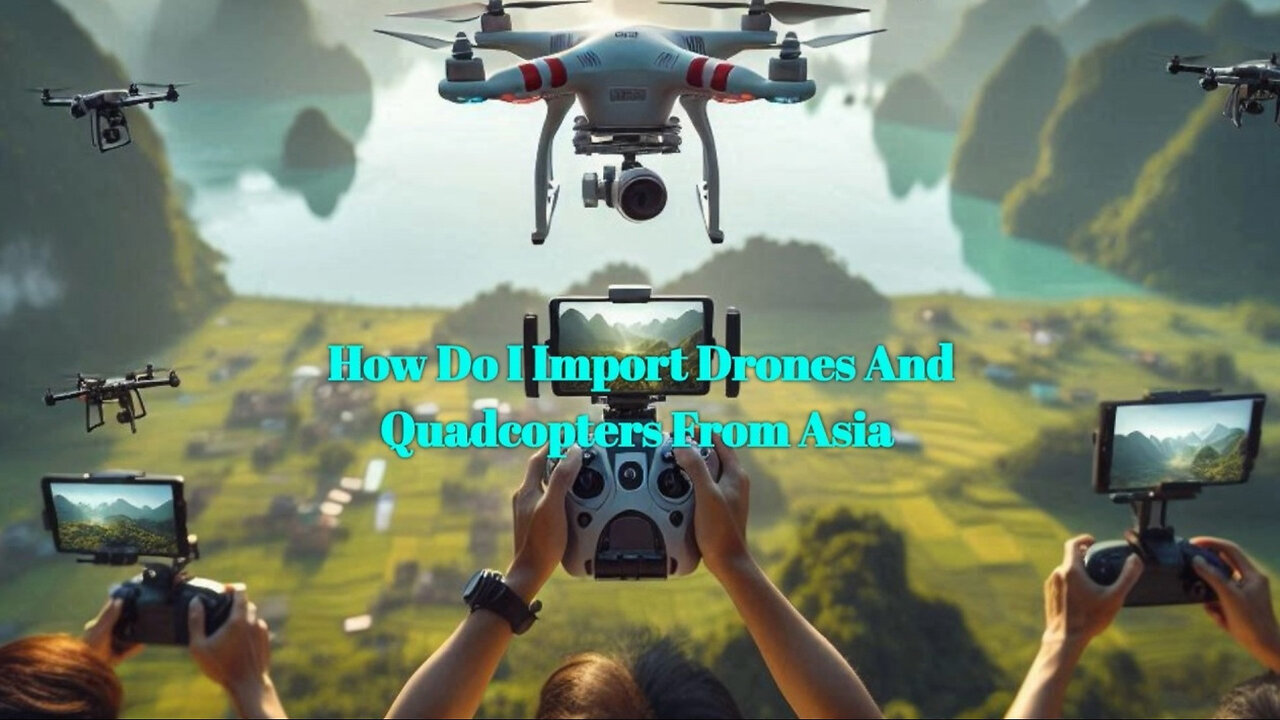Premium Only Content

Unlock the Secrets of Importing Drones: All You Need to Know!
ISF Entry | Phone: 800-215-1849 | Email: [email protected] | https://isfentry.com/
Importing drones and quadcopters from Asia involves several important steps and considerations. The first step is to understand the customs brokerage process, which involves clearing goods through customs barriers. This includes filing the necessary paperwork, paying duties and taxes, and ensuring compliance with regulations. To make this process smoother, it is recommended to work with a licensed customs broker who has expertise in customs procedures.
Another important aspect to consider is customs bonds. A customs bond serves as a financial guarantee and is required for importing goods into the United States. It ensures that the importer will fulfill all legal obligations, such as paying duties and taxes, and complying with customs regulations. Importers can choose between a single-entry bond for one shipment or a continuous bond for multiple shipments.
The Importer Security Filing (ISF) requirement is another crucial consideration when importing drones and quadcopters. The ISF must be filed with Customs and Border Protection (CBP) 24 hours before the cargo is loaded onto a vessel bound for the United States. It provides important information about the shipment, including the names and addresses of the seller and buyer, a description of the goods, and the location where the goods were loaded.
Shipping logistics is also a vital aspect to consider. Depending on the size and quantity of the shipment, different modes of transportation, such as air freight or ocean freight, may be chosen. Air freight is faster but more expensive, while ocean freight is slower but more cost-effective for larger shipments. Working with a reliable freight forwarder can help navigate the complexities of shipping and ensure that the drones and quadcopters arrive safely and on time.
Compliance with customs regulations is of utmost importance when importing drones and quadcopters. Importers must ensure that the products comply with technical and safety standards set by relevant authorities, such as the Federal Aviation Administration (FAA). All required documentation, such as certificates of origin and product specifications, must be accurate and complete. Customs officers may inspect the cargo to verify compliance, so being prepared is crucial.
Once the drones and quadcopters have cleared customs and are in the importer's possession, it may be necessary to obtain any necessary permits or licenses before using or reselling them. For example, drones may need to be registered with the FAA and follow certain guidelines for recreational or commercial use. Staying up-to-date with the latest regulations is essential for legal compliance.
In conclusion, importing drones and quadcopters from Asia requires an understanding of the customs brokerage process, customs bonds, Importer Security Filings, shipping logistics, compliance with customs regulations, and obtaining necessary permits or licenses. Working with a trusted customs broker and staying informed about the necessary procedures is crucial for a successful importation.
#usimportbond #isfcustomsbroker #uscustomsclearing #isfentry
Video Disclaimer Here: This educational content is unassociated with US governmental bodies.
00:50 - Customs Brokerage and Compliance: Importing drones from Asia requires understanding the customs brokerage process, which includes filing paperwork, paying duties, and ensuring compliance with regulations. Many importers opt to work with licensed customs brokers for a smoother experience.
01:07 - Customs Bonds: A customs bond is necessary for importing goods into the U.S. It serves as a financial guarantee that importers will meet their legal obligations, including duties and compliance with customs regulations. Importers can choose between single-entry or continuous bonds based on their shipping needs.
01:36 - Importer Security Filing (ISF): Importers must file an Importer Security Filing with Customs and Border Protection at least 24 hours before loading cargo onto a vessel. This document contains vital shipment information, including the seller and buyer's details and a description of the goods.
02:06 - Shipping Logistics and FAA Compliance: Choosing the right shipping method (air freight vs. ocean freight) is crucial for timely delivery. Additionally, importers must ensure drones comply with FAA regulations and obtain necessary permits or licenses post-importation for legal use or resale.
-
 2:11:41
2:11:41
Badlands Media
12 hours agoDEFCON ZERQ Ep. 016: Shadow Governments, Ancient Tech & the Spiritual War for Humanity
81.9K58 -
 2:09:24
2:09:24
Inverted World Live
7 hours agoRats Have Learned to Hunt Bats | Ep. 135
31.2K14 -
 2:48:01
2:48:01
TimcastIRL
8 hours agoLIVE Election Coverage: Polling Stations SWATTED, Bomb Threats Called In | Timcast IRL
254K176 -
 3:30:07
3:30:07
Barry Cunningham
8 hours agoBREAKING NEWS: COUNTDOWN TO COMMUNISM! ELECTION RESULTS SHOW!
59.5K47 -
 2:11:28
2:11:28
DeVory Darkins
7 hours agoLIVE NOW: 2025 Election results and Exit Polls AMA
70K44 -
 2:34:04
2:34:04
DLDAfterDark
6 hours ago $0.08 earnedJust Another Tuesday - In Virginia - The Governor's Race & Glock Talk
29.3K6 -
 3:21:38
3:21:38
The Charlie Kirk Show
9 hours agoJUDGMENT DAY 2025: The Election Results Stream
200K82 -
 3:51:07
3:51:07
MattMorseTV
10 hours ago $0.82 earned🔴Election Day LIVE COVERAGE.🔴
99.2K49 -
 1:16:51
1:16:51
Flyover Conservatives
1 day agoSHOCKING DATA REVEALS: Young Voters Are Done With the Old GOP - Mark Mitchell, Rasmussen Reports | FOC Show
42.8K17 -
 1:15:28
1:15:28
Sarah Westall
9 hours agoGrooming is Protected and Encouraged by the System – Michelle Peterson and Mike Adamovich
35.9K10